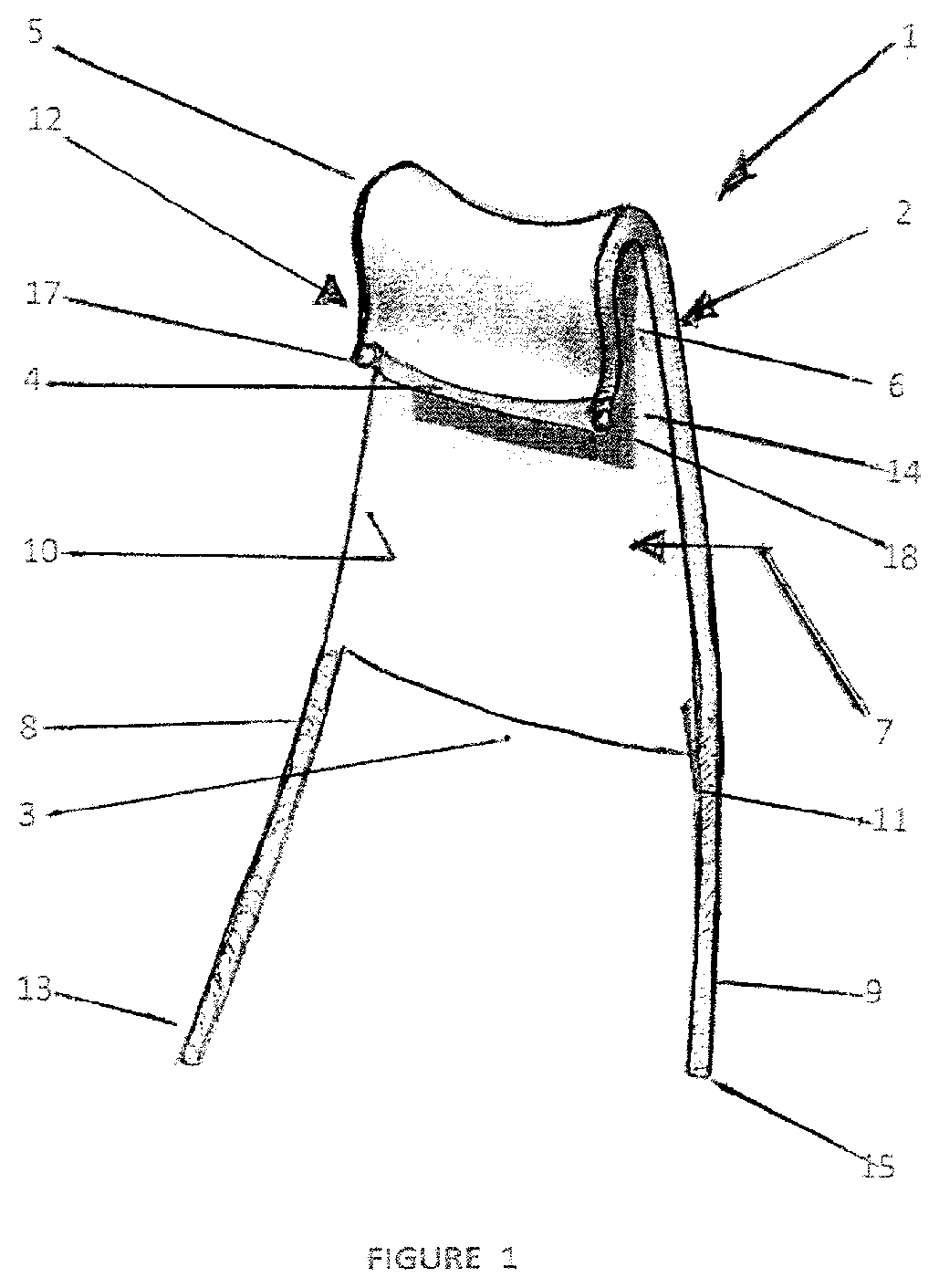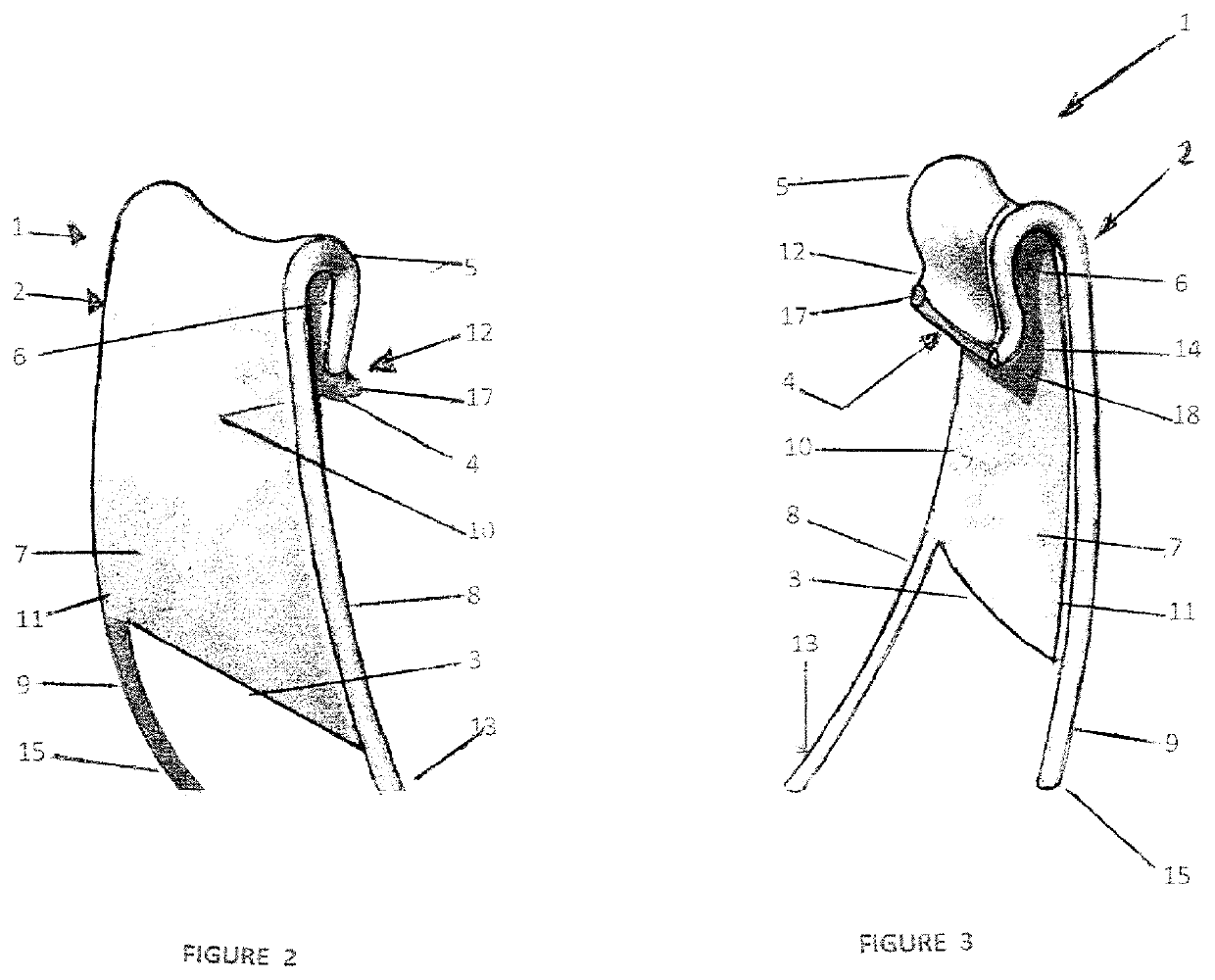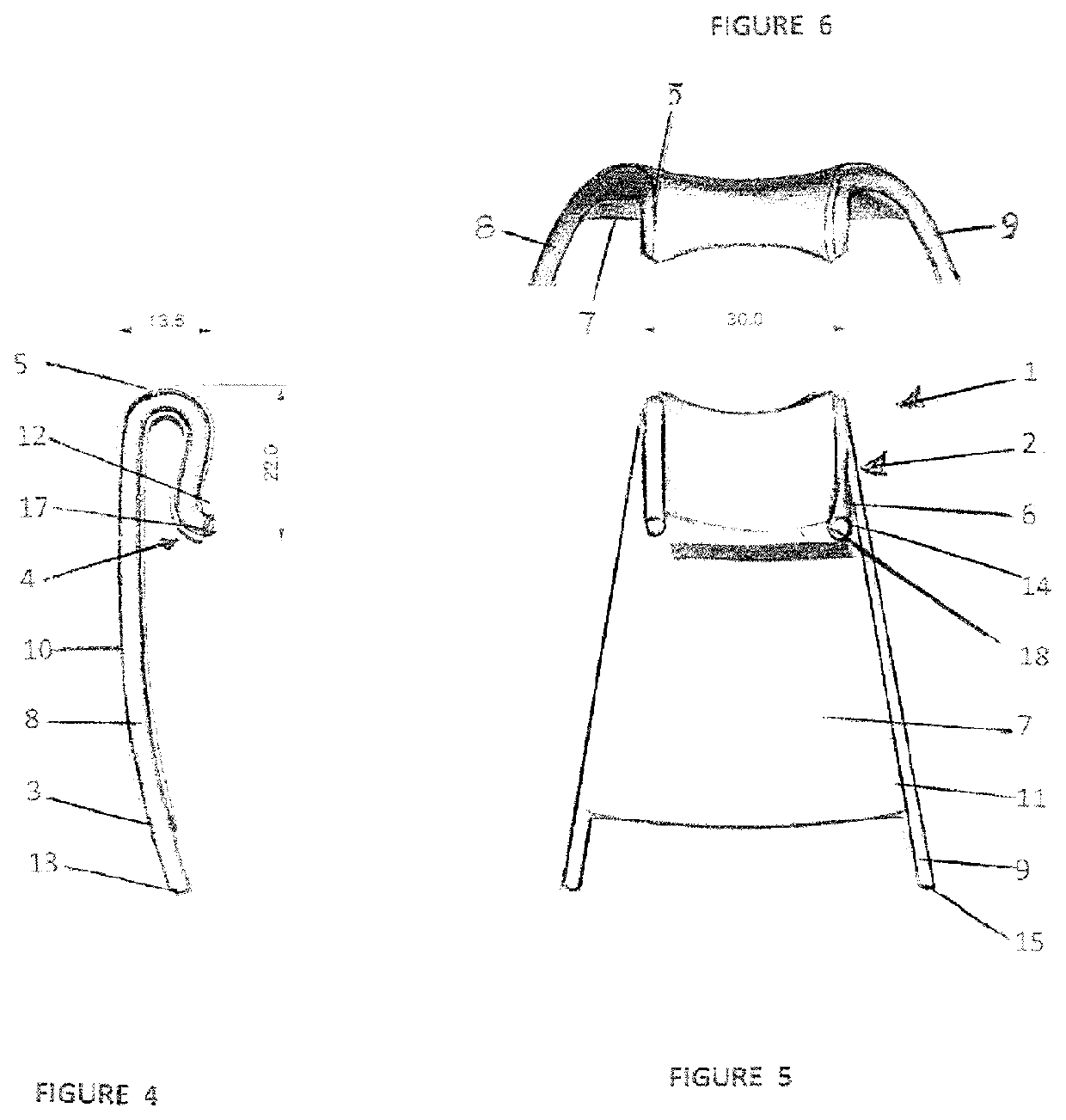Protective device for use in oral surgical procedures
a protective device and surgical technology, applied in the field of surgical aids, tools and appliances, can solve the problems of direct electrical burn, burnt soft tissue causing patient trauma and scarring, and potentially devastating cosmetic and functional injuries,
- Summary
- Abstract
- Description
- Claims
- Application Information
AI Technical Summary
Benefits of technology
Problems solved by technology
Method used
Image
Examples
Embodiment Construction
[0051]The present invention will now be described in more detail according to a preferred embodiment but non limiting embodiment and with reference to the accompanying illustrations. The examples referred to herein are illustrative and are not to be regarded as limiting the scope of the invention. While various embodiments of the invention have been described herein, it will be appreciated that these are capable of modification, and therefore the disclosures herein are not to be construed as limiting of the precise details set forth, but to avail such changes and alterations as fall within the purview of the description.
[0052]FIG. 1 shows a perspective view of a mouth protecting device 1 according to a preferred embodiment. Protector 1 comprises a body 2 having a first end 3 and second end 4. Second end 4 locates inside the mouth of a patient (not shown) and first end 3 locates outside the mouth of a patient with return portion 5 defining a recess 6 which accommodates and wraps arou...
PUM
 Login to View More
Login to View More Abstract
Description
Claims
Application Information
 Login to View More
Login to View More - R&D
- Intellectual Property
- Life Sciences
- Materials
- Tech Scout
- Unparalleled Data Quality
- Higher Quality Content
- 60% Fewer Hallucinations
Browse by: Latest US Patents, China's latest patents, Technical Efficacy Thesaurus, Application Domain, Technology Topic, Popular Technical Reports.
© 2025 PatSnap. All rights reserved.Legal|Privacy policy|Modern Slavery Act Transparency Statement|Sitemap|About US| Contact US: help@patsnap.com



